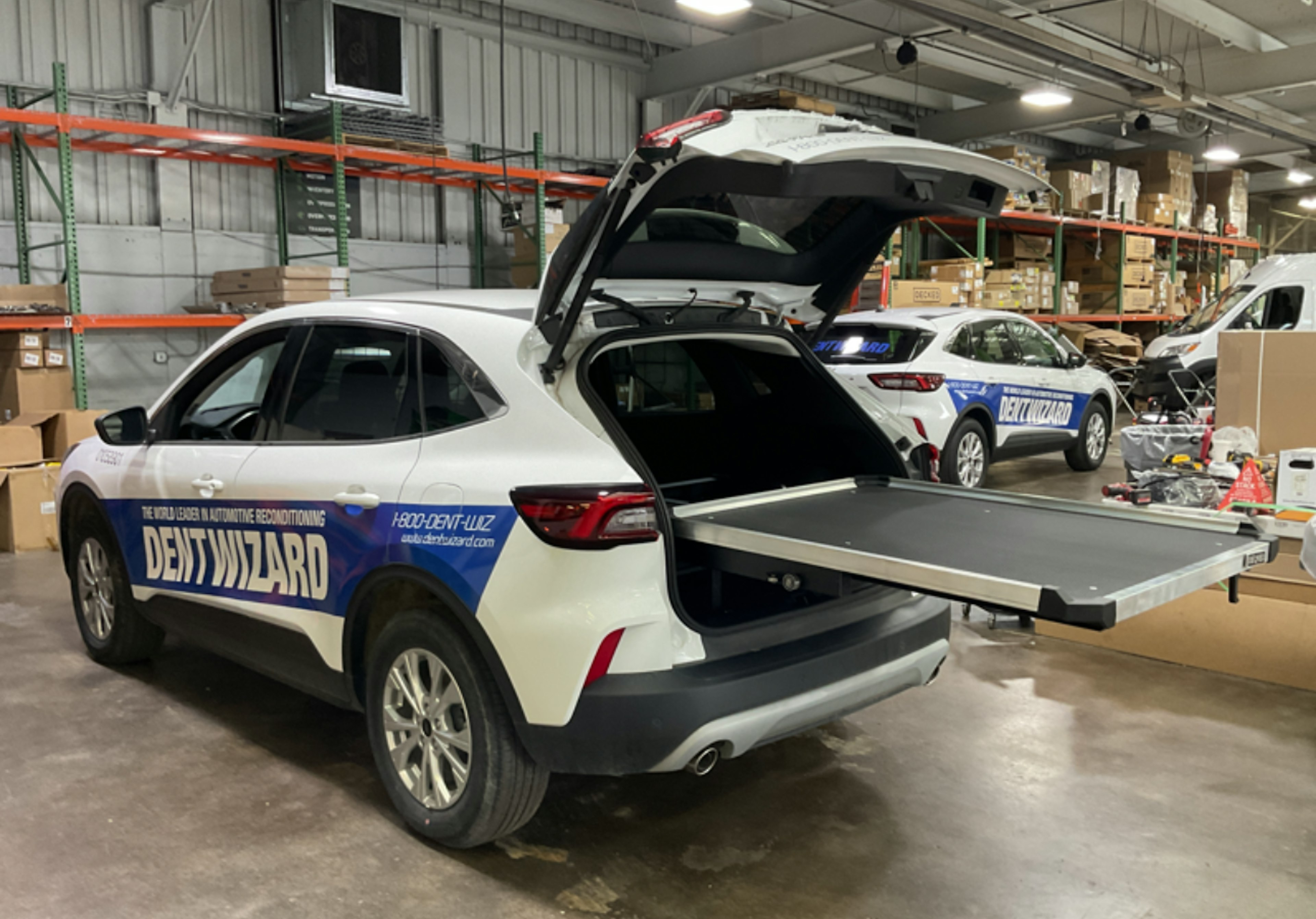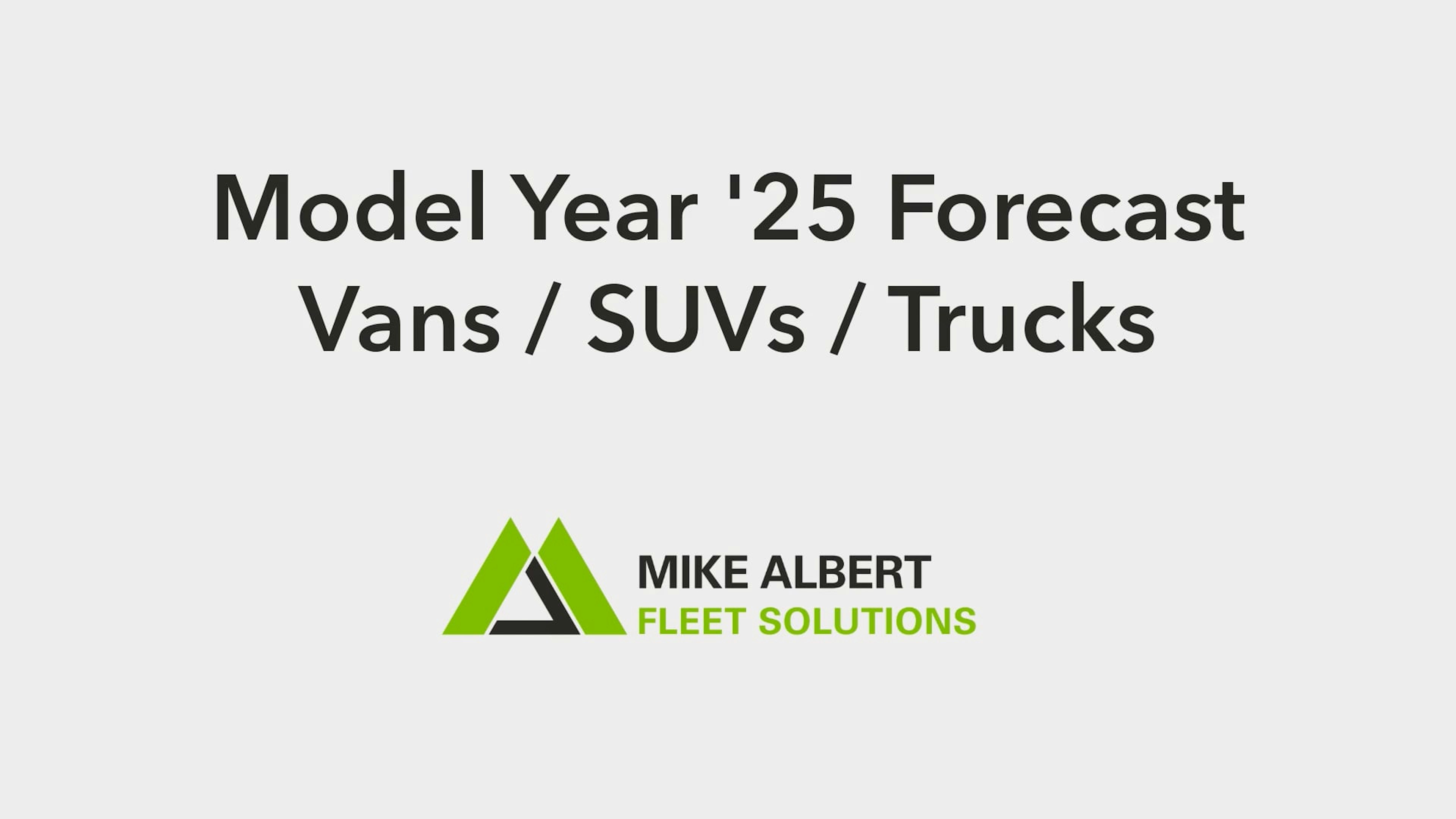A decline in sales and a shift to electric vehicles led manufacturers of small commercial vans to end production of their models in 2023 in the U.S. Here’s what’s been discontinued and when:
- Ford Transit Connect (2023)
- Mercedes-Benz Metris (2023)
- Stellantis Ram ProMaster City (2022)
- Nissan NV200 (2021)
- GM Chevrolet City Express (2018)
Consider these alternatives for compact van replacement.
Fortunately, several viable options are comparable in price and function to small cargo vans. For example, a compact SUV with a ladder rack and/or equipment upfit in the backseat/cargo area may accommodate your needs.
Recommended compact SUVs and subcompact crossovers:
- Chevrolet Equinox
- Ford Escape
- Honda CR-V
- Nissan Kicks
- Nissan Rogue
- Toyota Corolla Cross
- Toyota RAV4
Alexa Rubin, the Truck Upfit Manager at Mike Albert, points out that for construction companies or trade professionals like electricians, plumbers, or carpenters, vehicles such as compact, midsize, or half-ton pickup trucks, appropriately upfitted, or caps might be the best compact van replacement for their fleet.
Recommended compact and midsize pickup trucks:
- Chevrolet Colorado
- Ford Maverick
- Ford Ranger
- Honda Ridgeline
- Nissan Frontier
- Toyota Tacoma
Alternatively, is it the right time to think a little bigger? If your business is growing and your vehicles’ payloads are increasing, full-size commercial vans may be your most effective choice.
Recommended full-size commercial vans:
- Chevrolet Express 2500 Cargo Van
- Ford Transit T150 or T250
- GMC Savana 2500 Cargo Van
- Mercedes Benz Sprinter 2500
- RAM ProMaster 1500 or 2500

Looking to expand
your fleet?
replace vehicles without losing uptime.
Innovative upfits to the rescue.
Todd Mattingly, Manager of Upfit Operations at Mike Albert, works with best-in-class equipment upfitting partners to create smart configurations that optimize the space within fleet vehicles to maximize efficiency and safety. He says that these solutions go a long way toward making SUVs, as well as compact and midsize pickup trucks, suitable compact van replacements.
Rubin agrees. “There’s been a lot of innovation in the upfit industry,” she says. “Specifically with cargo slides that make the small work van alternatives more versatile and productive and, in some ways, more ergonomic.” For example, a cargo slide inserted into a Ford Maverick provides an elevated platform that sits higher than it would in a compact van, offering meaningful ergonomic benefits.
Rubin also notes that upfit companies are designing shelving and storage bin systems that sit atop those slide systems, providing additional organization and protection of tools and other items.
How one company replaced their compact vans.
Mike Albert helped a client in the mobile paint business realize that, with inflatable paint booths, they could replace their Ford Transits with vehicles like the Toyota Tacoma. “The inflatable paint booths are attached to the back of the truck with a turbine spray system,” says Mattingly. “They’re able to pull full-size cars into the booth and paint them right out of the back of the pickup truck.”
The same client also performs paintless dent repair. In this case, Mattingly and his team realized that the cargo slide that fit the Ford Maverick could also work well for the Ford Escape. “We created a plywood platform to elevate the back of the slide given the natural slope that occurs when you fold the seats down,” says Mattingly. “This, along with a wire partition, made for the perfect solution.”
Expect more upfit innovations to come.
Mattingly and Rubin have seen an interesting trend among some OEMs—they’re focusing more on upfits. For example, some provide CAD drawings of their vehicles to assist in the design and installation of customer upfits. Some OEMs even offer used vehicles for upfitters and designers to gain hands-on experience exploring upfit innovations. This is sure to lead to even more upfit innovations
For vehicles that you upfit, set the right expectations.
If you choose an option requiring upfitting, be aware of some current challenges. “Like just about everything else these days, the costs of upfitting are up 20% since Covid,” explains Rubin. Unlike in the past, pricing is not fixed and may increase during the upfit process. Timing can also be an issue. “There are limited time slots for getting vehicles upfitted,” she says. “And companies can fall behind if orders for equipment and parts don't arrive by the time a vehicle is scheduled for an upfit.”
Consider your vehicle’s entire life cycle.
As you evaluate which vehicles to replace your small utility vans, consider the big picture and your total cost of ownership (TCO). For example, the difference in TCO between a compact SUV and a full-size commercial van is typically about 12 cents per mile. That adds up. Fast. But there is a bright spot for opting to upfit compact SUVs or midsize pickups—higher remarketing values. Since these two vehicle types are in high consumer demand on retail lots, they have a broader resale market than typical commercial vehicles once the upfit equipment is removed. Drivers purchasing compact SUVs will be particularly impressed with pristine passenger rows preserved by the upfits.
That said, Rubin and Mattingly warn against emphasizing the vehicle’s remarketing value too much. “Most fleets have to recognize that they won’t get a lot out of some vehicles on the back end because they have a ton of miles and have been used hard every workday for nine or ten hours,” says Rubin.
But, Rubin says, that could be missing the big picture. “Think about all the things you can do to make a vehicle more functional, efficient, and safe to operate,” she says. “Then calculate how much the vehicle earns your company daily over three to five years. When you do that, it puts the remarketing value in a new light.”
If you absolutely must have compact vans...can you go electric?
Some OEMs are getting close to releasing electric compact vans in the USA. Curious what these models might look like? see below for European compact cargo vans options. Between the Chicken Tax and tariffs, this results in added complexities to launching the USA.
- Ford e-Transit Courier with 181 miles of range.
- Citroen e-Jumpy with 217 miles of range. Citroen is owned by Stellantis.
- Nissan Townstar with 140+ miles of range.
- Mercedes-Benz eVito with 160 miles of range. (Vito is the European equivalent of Metris.)
- Volkswagen ID.Buzz with 276 miles of range.
- …and Kia has publicly shared its plans to launch their PBV (Platform Beyond Vehicle) line-up with a number of models
To determine if EVs can meet your business needs, analyze your current vehicles' telematics data to understand their daily mileage range, percentage of time spent idling, and more. EVs can result in significant energy savings for your fleet. For instance, delivery fleet vehicles typically idle 20 minutes before and 20 minutes after delivery, making them ideal candidates for EV conversion, as this could save $354 a year per vehicle. *
The fleet experts at Mike Albert can help you run and analyze the data to determine whether EVs make sense for your fleet.
If you plan on incorporating electric cargo vans into your fleet, it's best to set up your EV charging infrastructure now. It takes some time and investment—but it's typically well worth it in the long run.
Make the ideal choice by analyzing your fleet data and vocational needs.
To find the right compact van replacement solution for your fleet, it’s essential to understand your fleet data, calculate each vehicle's TCO, and factor how your vehicles are used on the job.
“You have to focus on the work requirements your fleet must accommodate. For example, what's the typical payload that your vehicles need to haul? Are your vehicles used by electricians or field techs who need a safe and easy way to transport and access their tools? We ask our clients important questions like these to help guide their decision-making process," says Rubin.
"But in the end,” she says, “it's up to our clients to determine what they can or can't live without. The final choice is theirs regarding what they must have and are willing to forego based on price and other factors."
If you would like further assistance figuring out the best compact van replacements for your fleet, the Mike Albert fleet experts are ready and eager to help. Contact us today.
*Calculations are based on a Ford Transit Connect with a 2.0L engine, estimating 0.16 gallons per hour idling:
- 20 minutes per hour idling x 8 hours = 2.6 hours/day
- 0.16 gallons per hour x 2.6 hours/day = 0.42 gallons/day
- 0.42 gallons/day x 260 days/year = 111 gallons/year
- 111 gallons year x $3.19/gallon = $354/year (avg. price/gallons nationwide - https://gasprices.aaa.com/)
- $354 year x 4 year lease = $1,416 spent idling
- This is different from the fuel economy (miles per gallon or MPG) for a compact van like the ProMaster City at 24 MPG in mixed-use, compared to a compact SUV such as the Nissan Rogue at 33 MPG in mixed-use.
Skills covered in the class
Vehicle Specification
Financial Management
Data-Driven Decision Making
Vehicle Life Cycle Analysis
Did you enjoy this class?
Share it with your organization and colleagues.



